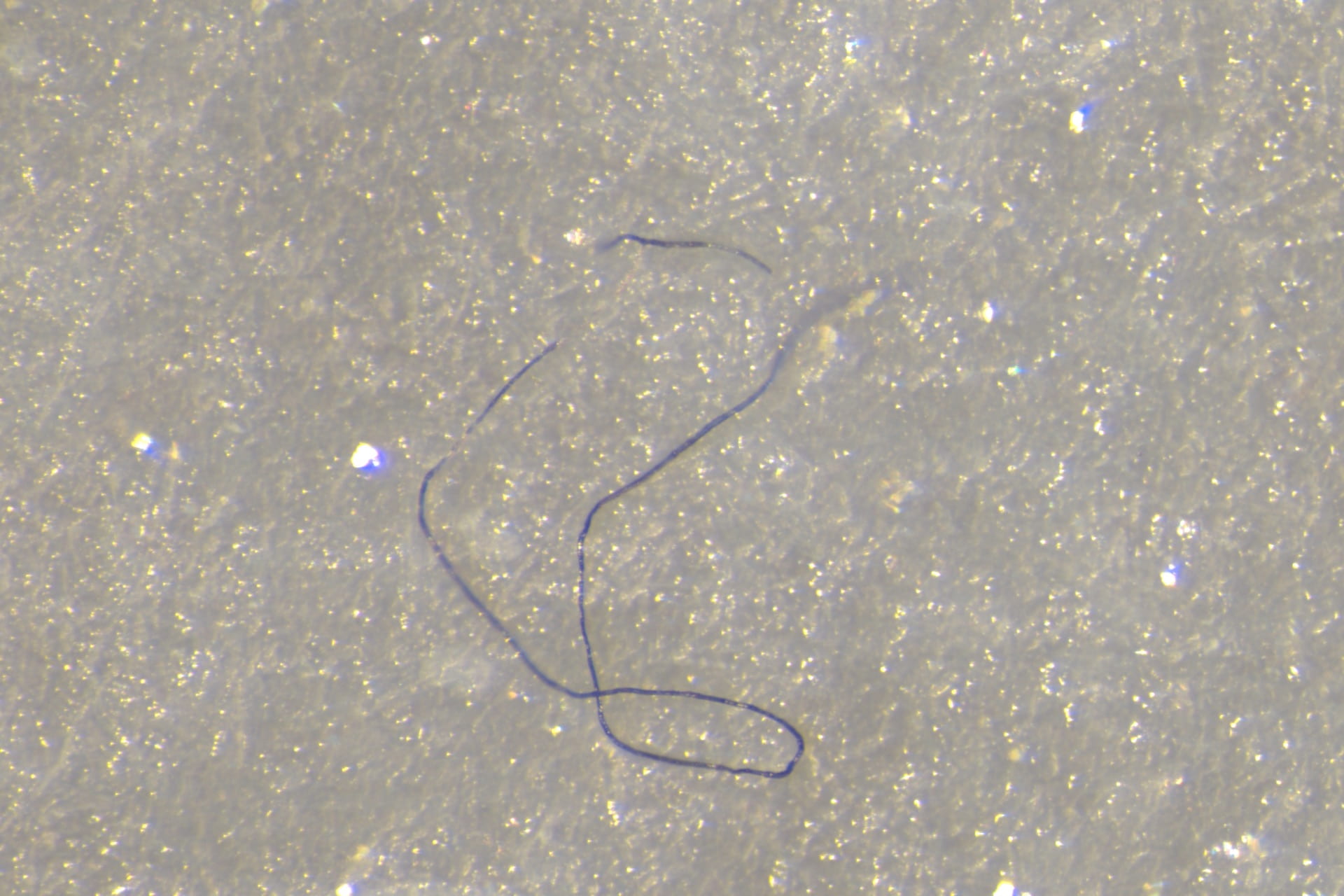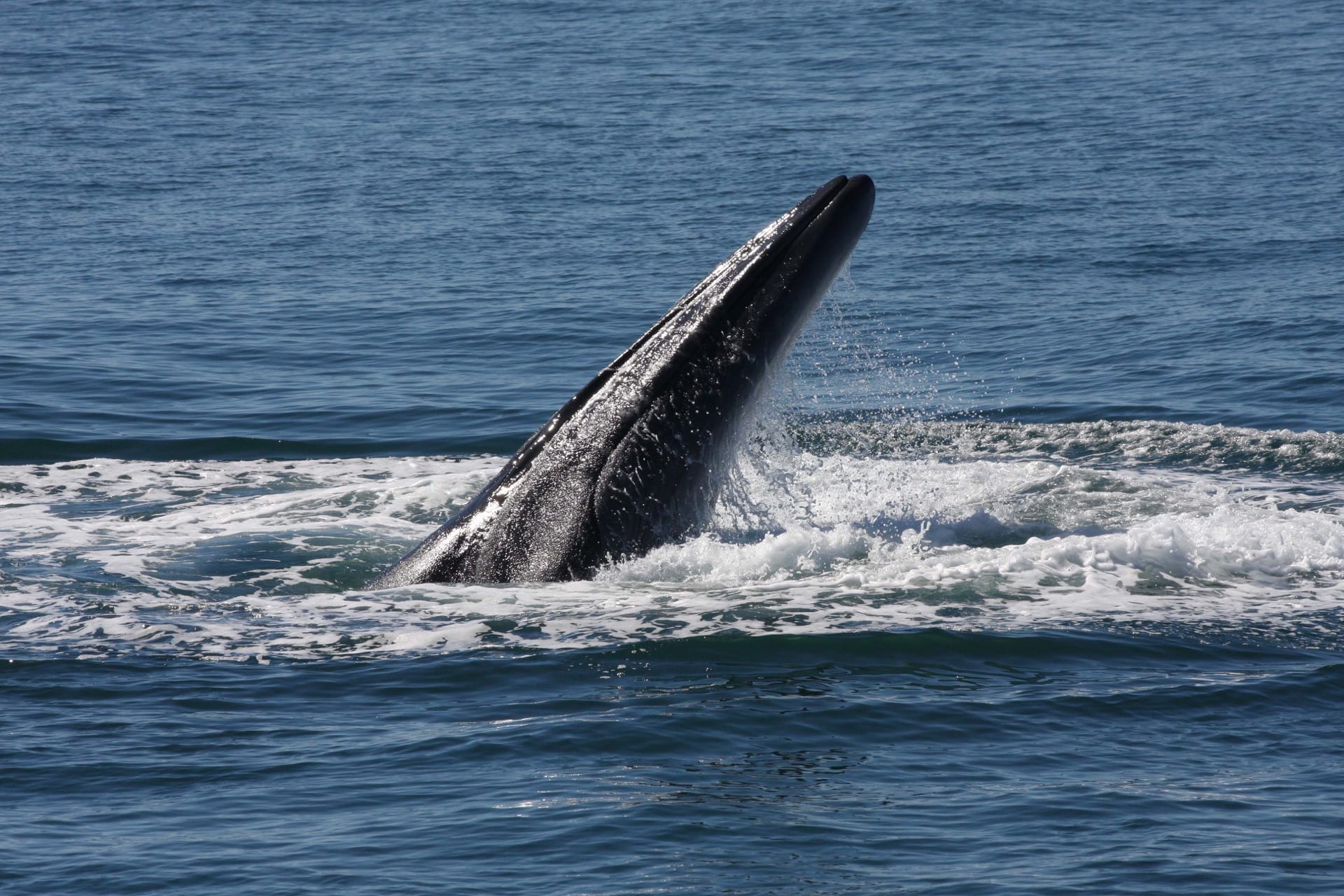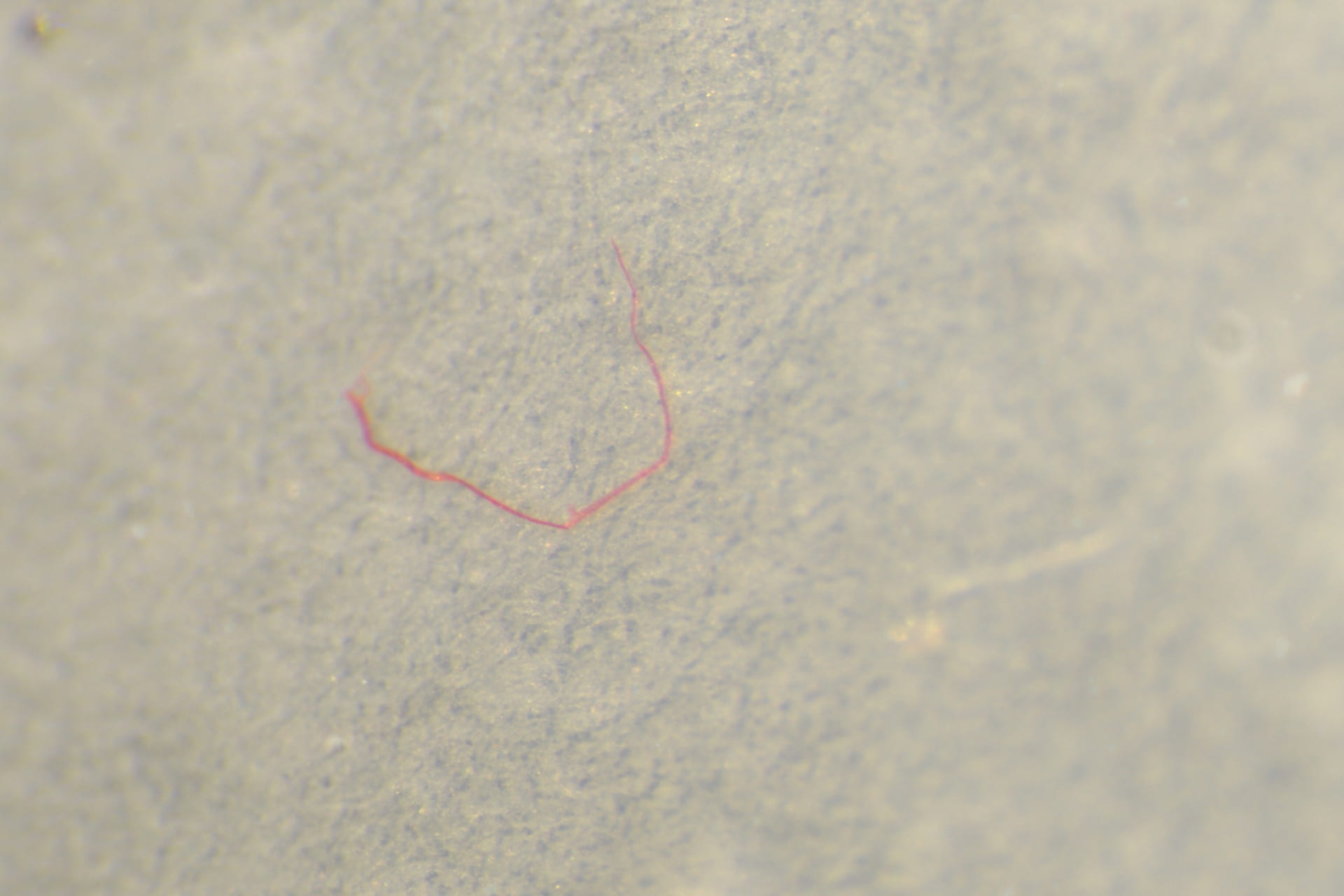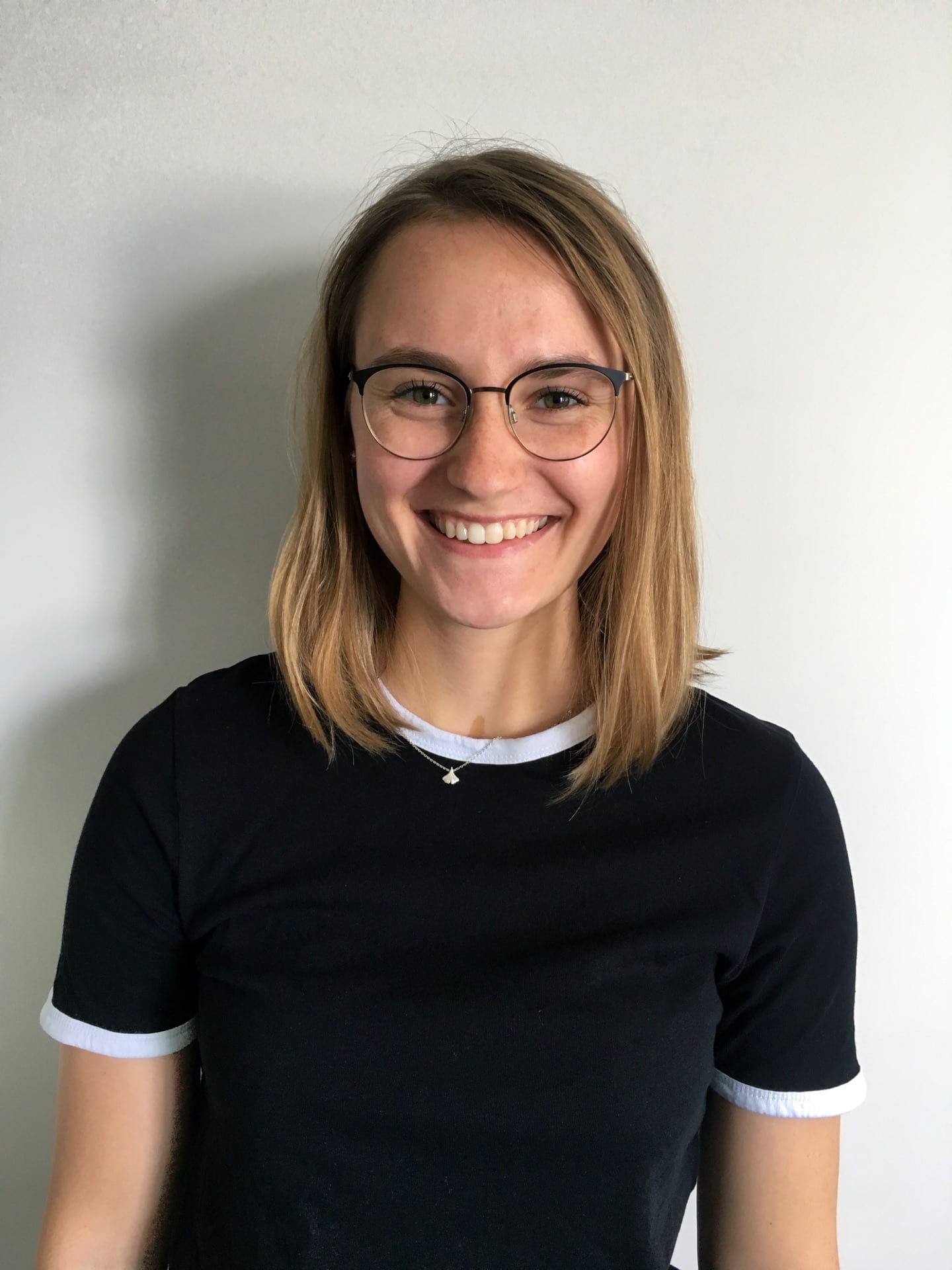Bryde’s whales live just off the coast of New Zealand’s biggest city, a likely microplastics hotspot. As the whales are ‘mega filter feeders’, they could engulf a lot of microplastics just by eating a meal, which is a major concern. By measuring the amount of plastic in the pooh, we would aim to estimate exposure levels, and to better understand the risk of microplastics in our oceans.
The goal of the project is to get a better understanding of how Bryde’s whales are exposed to microplastic in the Hauraki Gulf and how it might relate to their diet.
Laura Zantis (below) and Fiona Lawler are working on this project, which is in collaboration with Thijs Bosker from the University of Leiden. An example of the type of plastic being identified in the whale poo is a small fibre, seen in the image below.



